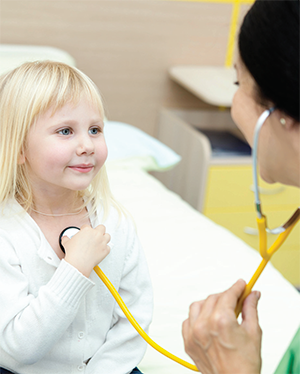
Nestor Rizhniak/shutterstock.com
WASHINGTON, D.C.—Patients with juvenile rheumatic diseases are thriving in an era of highly effective therapies, successful self-management strategies, better understanding of genetic links to autoimmunity risk and improved efforts to listen to and engage with these young patients.
That bright picture for young people with arthritis was presented by pediatrics at the ACR/ARHP Concurrent Abstract Session on Nov. 16 at the 2016 ACR/ARHP Annual Meeting, where they shared their newly published findings.
Smoothing Transition
Young adults with arthritis are more confident about self-management and less likely to drop out of care after transition if they receive proper education and support, according to a new study evaluating a clinical transition pathway for young adults with autoimmune diseases at Erasmus MC Rheumatology in Rotterdam, Netherlands.1
The researchers tested the effectiveness of their program, which includes an education coordinator to work with patients from 12–18. Prior to developing the program in 2008, they found that 25–52% of patients dropped out of care after transition, said Margot J. Walter, NP, a nurse practitioner and lead author of the study.
From 154 electronic medical records, the researchers found that about 10% of patients who had completed the program had dropped out of the clinic three years after transition. Based on 77 questionnaires completed after transition, patients also reported high scores on standard satisfaction and self-efficacy measures, said Ms. Walter.
These high scores suggest that “young people were confident” about managing their own care as adults, she said. “Transition is a phase, not a one-time event. We cannot ignore this important period of care.”
Heart & Lung Health
Cardiorespiratory fitness in patients with juvenile idiopathic arthritis (JIA) who have access to biologic drugs is comparable to that of their healthy peers, according to a new study by researchers at Oslo University Hospital in Norway.2 All JIA patients in their clinic are referred to physical therapy after diagnosis and encouraged to engage in physical activity, said Kristine Risum, PT, MSc, a lead author of the study.
In 2015, the researchers compared cardiorespiratory fitness levels in 59 JIA patients and 59 healthy controls, both with a mean age of 13.5 years. The JIA patients’ mean disease duration was 7.5 years, and most had used biologics. Fitness was measured as peak oxygen uptake levels during a continuous, graded treadmill test until exhaustion, and heart rate at beats per minute.
The JIA patients scored a mean of 45.1 and the healthy controls scored a mean of 46.5 on the VO2 peak (mL/kg/minute) lung fitness test. JIA patients scored a mean of 196 beats per minute and healthy controls a mean of 197 on the heart rate test. Results suggest that there is no significant difference in heart or lung fitness between JIA patients and healthy controls in the era of biologic treatment, said Risum.
Rethinking ACR Pediatric 30
Developed in 1997, the ACR Pediatric 30 Core Set is the existing tool pediatric rheumatologists use to measure disease activity and evaluate clinical trial efficacy in juvenile idiopathic arthritis (JIA). To contribute to a discussion on updating the core set to incorporate current outcomes expectations and patient-centered domains, one new study took a qualitative approach to better understand the experience and priorities of JIA patients and their caregivers.3
“We wanted to make sure we were including aspects of the disease experience that are important to the people this core set was intended to measure,” said Jennifer Horonjeff, PhD, a researcher at Columbia University Medical Center and a lead author of the study. This project is one of a long series of studies on the core set.
Dr. Horonjeff and colleagues at several North American pediatric rheumatology centers conducted 72-hour, moderated, virtual focus groups with a total of 24 adolescent and young adult arthritis patients and caregivers. Researchers included discussion guides “designed to look at the holistic patient journey, not just the physical, but also the social and mental health that goes with this disease,” she said.
Adolescents identified activity and participation, and the psychosocial impact of disease as important domains. Young adults most frequently cited psychosocial impact, said Dr. Horonjeff. Caregivers of patients younger than 15 cited psychosocial impact, and body function and structure. Caregivers of older teens most frequently mentioned activity and participation, and the secondary impact of disease on family and caregivers.
Participants also discussed qualities they associate with inactive disease, including no pain or swelling, ability to participate in activities and better mood. They also offered suggestions on how doctors could measure disease activity, including listening to the patient, said Dr. Horonjeff. Patients and caregivers identified several domains not included in ACR Pediatric 30, she said.
Infection Risks
Juvenile rheumatic disease patients on immunosuppressants have increased infection rates, and this varies depending on the drug, according to a 2016 study conducted by the Pediatric Rheumatology International Trials Organization (PRINTO) in Genova, Italy.4 The study measured infection rates in 6,969 arthritis patients using data from the Pharmachild registry.
Researchers analyzed young patients divided into the following cohorts: treated with methotrexate and no biologic; treated with one biologic and no methotrexate; treated with two biologics with or without methotrexate; and those taking neither methotrexate nor a biologic. One-third of patients taking methotrexate without a biologic were also on systemic corticosteroids, said Gabriella Giancane, MD, a rheumatologist at Istituto Giannina Gaslini in Genova and a co-author of the study. Etanercept was the most frequent first choice of treatment for patients who used a biologic.
Systemic corticosteroids increased infection risk in patients as much as 12 times, she said. Use of methotrexate, cyclosporine and thalidomide also caused significantly higher infection risk. Dr. Giancane said the biologics associated with higher rates of infectious events included rituximab, IL-1 inhibitors, such as anakinra, and among the TNF inhibitors, infliximab. Infection rates were increased by 5.1 times in patients receiving one biologic, and 6.6 times if they received two biologics, the study found.
Neonatal Lupus
Neonatal lupus (NL) may predispose patients to develop other autoimmune diseases later in life, especially the cardiac manifestation, according to a new study by researchers at the New York University School of Medicine.5 NL is associated with passively acquired autoimmunity due to exposure to the mother’s anti-Ro antibodies in utero, and its main clinical features are cutaneous and cardiac, said Aaron Garza Romero, MD, a lead author of the study.
Using data from the Research Registry for Neonatal Lupus, the researchers analyzed questionnaire data and DNA mapping of 346 children exposed to anti-Ro in utero, including 134 with cardiac NL and 74 with cutaneous NL, and 138 of their unaffected siblings. Sixty-three percent of the subjects’ mothers had either Sjögren’s syndrome or systemic lupus erythematosus, said Dr. Garza.
They found that 15 of the cardiac NL and two of the cutaneous NL patients developed autoimmune diseases later, with psoriasis most prevalent. Five out of 138 siblings unaffected by NL developed other autoimmune diseases later, he said. Psoriasis gene regions were significant in cardiac NL patients.
Geographic Disparities
JIA patients exhibit different disease outcomes depending on where they live, possibly due to availability of biologics in wealthier countries, according to a new study of 8,779 patients conducted by Prof. Angelo Ravelli and his research group at Istituto Giannina Gaslini in Genova, Italy.6
“We wanted to define and compare epidemiology of different JIA categories in different geographic areas, and to compare treatments used in different pediatric rheumatology centers, including the availability of biologics, and to compare outcomes across the world,” said Alessandro Consolaro, MD, PhD, a lead author of the study.
[In focus groups,] adolescents identified activity & participation, & the psychosocial impact of disease as important domains. Young adults most frequently cited psychosocial impact.
The researchers analyzed questionnaires from JIA patients and parents in the Epidemiology, Treatment and Outcome of Childhood Arthritis (EPOCA) study, including data from 53 countries and 130 pediatric rheumatology centers from the Pediatric Rheumatology International Trials Organization (PRINTO).
Fifty percent of JIA patients in North America received one or more biologics, and patients in Southeast Asia reported the lowest frequency of biologic use, said Dr. Consolaro. Biologics were less frequently used in regions with lower GDPs, he said.
JIA patients in North Africa/Middle East and Eastern Europe reported higher disease activity scores based on cJADAS-10, and patients in Western Europe, North America and Southeast Asia had low scores. The study’s results showed a modest negative correlation between disease outcome and regions’ GDPs, he said.
Susan Bernstein is a freelance medical journalist based in Atlanta.
References
- Walter M, Kamphuis SSM, van Pelt PA, et al. Evaluation of a clinical transition pathway for adolescents with autoimmune diseases (abstract). Arthritis Rheumatol. 2016;68 (suppl 10).
- Risum K, Edvardsen E, Selvaag AM, et al. Cardiorespiratory fitness in children with juvenile idiopathic arthritis treated in the biological era is comparable with controls: A cross-sectional study (abstract). Arthritis Rheumatol. 2016;68 (suppl 10).
- Horonjeff JR, Thornhill S, Horton DB, et al. Reconsidering the juvenile idiopathic arthritis core set: How patients and caregivers define disease activity (abstract). Arthritis Rheumatol. 2016;68 (suppl 10).
- Giancane G, Swart J, Bovis F. Risk of infections in juvenile idiopathic arthritis patients treated with biologic agents and/or methotrexate: Results from pharmachild registry (abstract). Arthritis Rheumatol. 2016;68 (suppl 10).
- Garza Romero A, Izmirly PM, Ainsworth HC, et al. Development of autoimmune diseases and genetic predisposition in children with neonatal lupus and their unaffected siblings (abstract). Arthritis Rheumatol. 2016;68 (suppl 10).
- Consolaro A, Ruperto N, van Dijkhuizen P, et al. Differences in disease phenotype, management and outcomes of children with juvenile idiopathic arthritis throughout the world—Analysis of 8,325 patients enrolled in the EPOCA study (abstract). Arthritis Rheumatol. 2016;68 (suppl 10).


